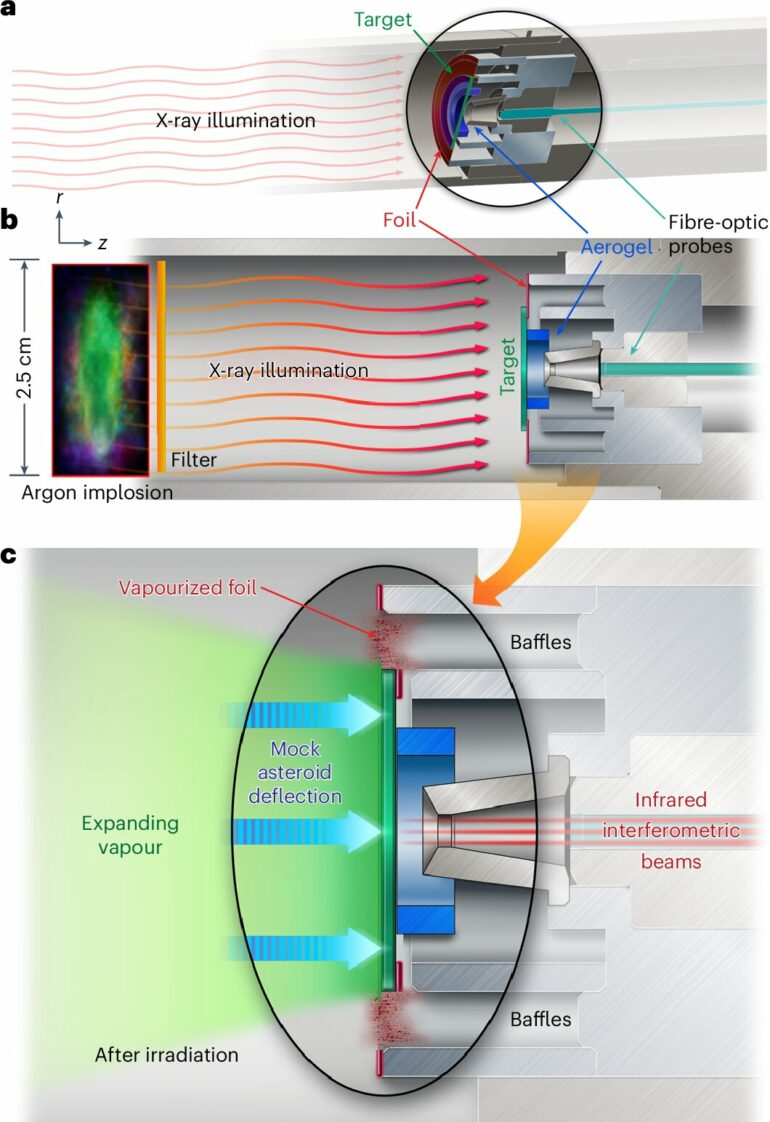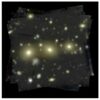An X-ray pulse may be able to vaporize the surface of an asteroid and change its trajectory, according to a proof-of-concept paper published in Nature Physics. A laboratory experiment that mimics the deflection of an asteroid model using this technique suggests that this technology could potentially be used for future planetary defense missions.
Comets and asteroids can pose a threat to our planet if their trajectories come too close to Earth. As demonstrated recently by NASA’s Double Asteroid Redirection Test (DART) mission, a spacecraft can be used to hit and change the path of an asteroid.
However, this physical impact approach requires ample time and preparation and is generally expensive. In an alternative approach, X-rays from a nuclear explosion could be used to rapidly heat the targeted object’s surface, causing it to vaporize and change its direction of motion.
Nathan Moore and colleagues tested how to mimic the effect of a nuclear device impacting an asteroid in laboratory experiments. They used X-rays to target two 12-millimeter-wide mock-up asteroids in a vacuum—one sample consisted of quartz, while the other was made from fused silica.
In both experiments, Moore and colleagues observed the X-ray pulses heating up the surface of the asteroid analogs, resulting in a vapor plume that generated transferred momentum to the quartz and silica targets and generated velocities of about 69.5 meters per second and 70.3 meters per second, respectively.
The researchers then used these measurements to conduct numerical simulations on how this method of asteroid deflection could scale and suggest that near-Earth objects with a diameter of around 4 kilometers could be deflected with the nuclear impactor strategy.
The authors suggest that future experiments could investigate other target materials and structures and test different X-ray pulses, as the vapor plume generated by the X-ray pulses is dependent on the chemical composition of the asteroid.
More information:
Nathan Moore, Simulation of asteroid deflection with a megajoule-class X-ray pulse, Nature Physics (2024). DOI: 10.1038/s41567-024-02633-7. www.nature.com/articles/s41567-024-02633-7
Provided by
Nature Publishing Group
Citation:
Proof-of-concept study uses X-rays to target mock-up asteroids in a vacuum (2024, September 23)



